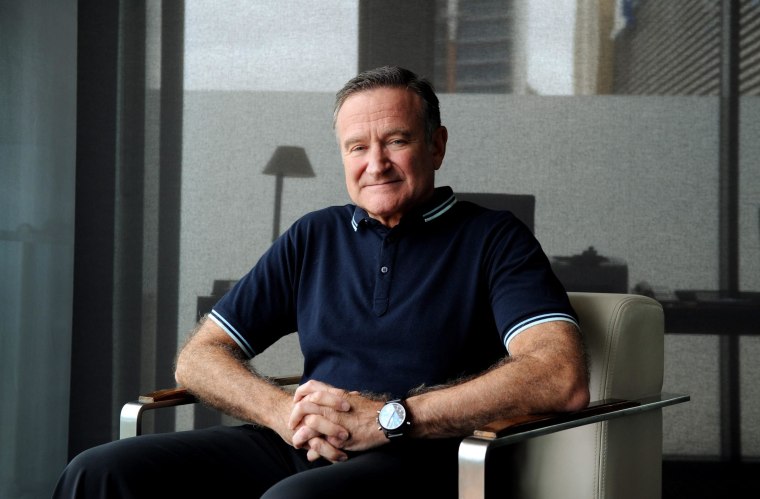Suicides went up 10 percent across the U.S. in the four months after actor and comedian Robin Williams died in 2014, researchers reported Wednesday.
The wall-to-wall media coverage of Williams’ death almost certainly contributed to the rise, the team at Columbia University found.
It’s a high-profile example of how “copycat” deaths can follow headline-making suicides, the researchers said. But it’s also easy for media coverage to help lower suicide rates, outside experts said.
“We observed a 9.9 percent increase in the number of suicides in the U.S. from August to December 2014,” epidemiologist David Fink and colleagues wrote in their report, published in the Public Library of Science journal PLoS ONE.
“There was an excess of approximately 1,841 suicides in the United States in the four months after the death of Robin Williams compared to what would be expected for that time period based on forecasted models.”
Related: Is social media contributing to rise in teen suicides?
In years past, during the same season, about 16,800 suicides would have been usual. But there were 18,960 suicides in the last third of 2014.
“Although we cannot determine with certainty that these deaths are attributable to the death of Robin Williams, we found both a rapid increase in suicides in August 2014, and specifically suffocation suicides, that paralleled the time and method of Williams’ death.”
It has been known for decades that media reports about suicides, especially celebrity suicides, lead to an increase of suicide deaths. It’s often the same with violent attacks, such as school shootings.
The effect is so strong that the World Health Organization has issued guidelines for reporting on suicide, as have various groups with expertise in countering suicide.
Related: Suicides among teen girls hit 40-year high
“It is a challenge in today’s media climate to follow these guidelines,” Fink said.
It’s especially harmful to publicize the way in which someone dies, and attention-grabbing headlines also tend to worsen the problem, experts agree.
“Just knowing help is available just acts as a psychological safety net.”
“Don’t quote the suicide note or describe the method used,” the National Suicide Prevention Lifeline advises in its guidelines for media.
“Avoid splashy headlines, such as ‘Kurt Cobain Used Shotgun to Commit Suicide.’ Instead, inform the audience without sensationalizing the suicide, e.g. ‘Kurt Cobain Dead at 27’,” it adds.
But media reports of suicides do offer an opportunity to help people at risk of suicide, Fink said.
“When you highlight an issue such as this, it creates an opportunity to, hopefully, shift the conversation,” he said.
Giving phone numbers and websites where help is available is an important first step, said John Draper, director of the National Suicide Prevention Lifeline.
“Because media or public figures are influencers, what we have also learned is that in general stories that talk about positive coping during suicide moments, can help reduce the suicide rate,” Draper said.
“When a public figure talks about a very dark period in their life, talks about suicide, about finding a way out of this and through it and how they are happy to be alive, those stories help.”
In fact, the media reports about Williams’ death led to a 105 percent increase in the number of calls to the National Suicide Prevention Lifeline toll-free number at 1-800-273-TALK(8255), Draper said.
“The media saturated the airwaves with stories not just about the suicide but also a number to call,” he said. “The rates might have been even higher had there not been this number out there.”
And just pointing out that help is available is in itself comforting to people at risk of suicide, Draper said.
“We know that when people are aware that there is help, that also acts as a public health buffer in preventing suicides,” he said. “Just knowing help is available just acts as a psychological safety net.”
